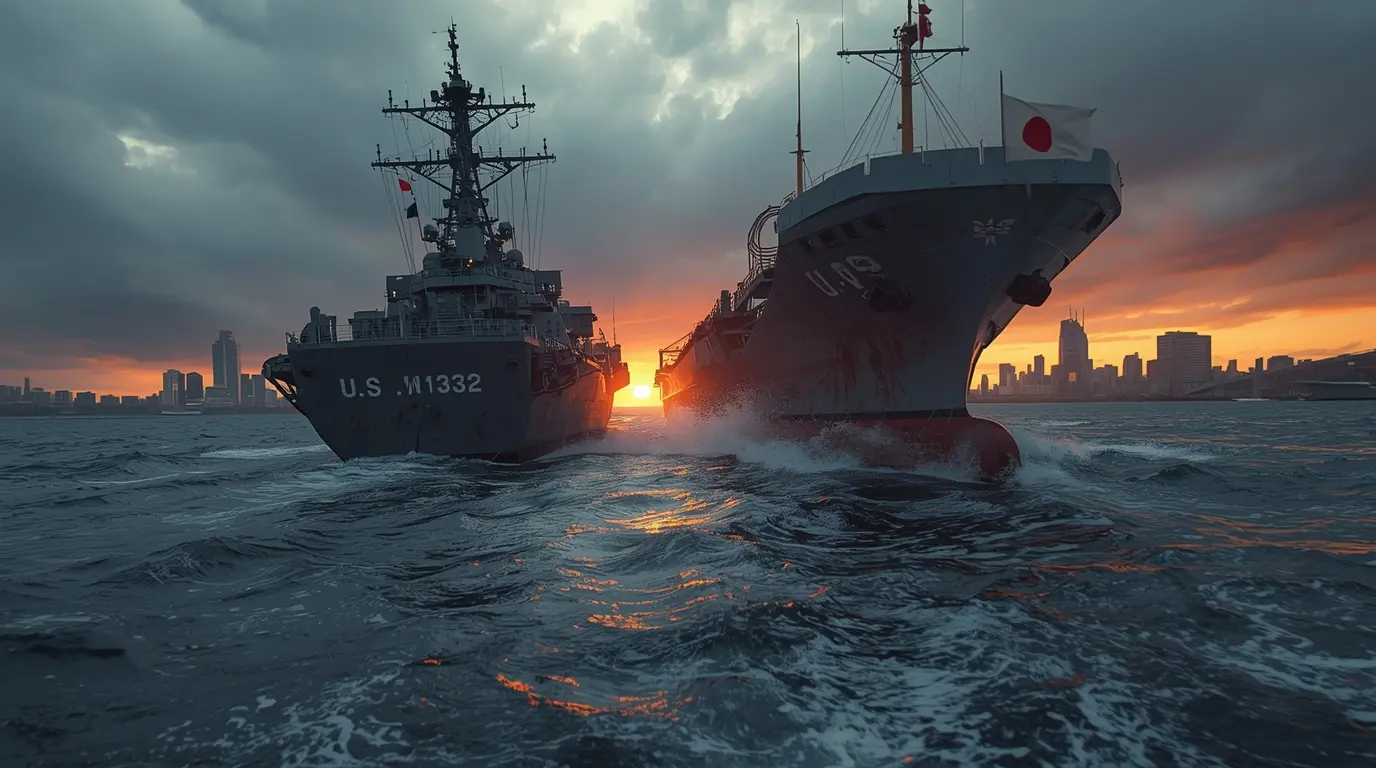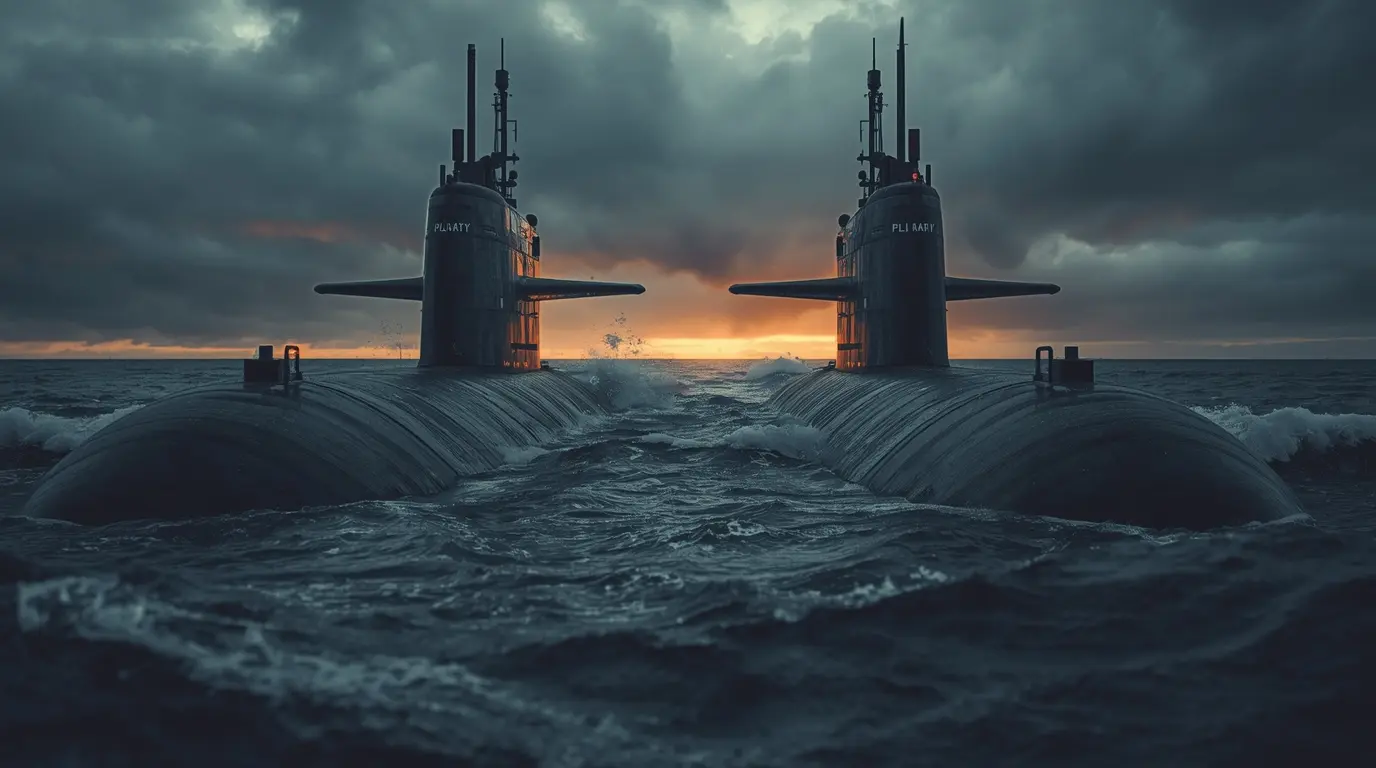A serious maritime accident took place on Thursday, August 21, 2025, in the busy waters of Tokyo Bay, involving the largest navy in the world and a local Japanese merchant vessel. The USS New Orleans, a US Navy amphibious transport dock, collided with a Japanese cargo ship, sparking immediate worries about the people on board, national security, and the risk of a major oil spill. The crash has pushed the US Navy’s operating procedures back into the glare of international review.
The Incident: Current Information
Japanese Coast Guard officers and the US Navy’s 7th Fleet Public Affairs Office have both confirmed details. The crash happened in the afternoon, local Tokyo Bay time. The USS New Orleans, part of the San Antonio class and built to carry and land Marines and their gear, was on a training run in the bay when the amphibious ship hit a Japanese dredging barge.
Early reports show that the smaller Japanese vessel was visibly damaged on its stern, while the larger USS New Orleans appears to have light, non-crippling damage yet remains mission-capable. Crew members from both ships escaped injury, a circumstance officials are treating as the silver lining. Both Japanese maritime regulators and the US Navy have launched a simultaneous inquiry tasked with pinning down a definitive cause. Expect analysts to focus on navigational discrepancies, lapse in bridge communications, and the potential malfunction of shipboard systems.
The Navy’s 7th Fleet reacted within minutes, sending an on-site damage survey party and an electronic footprints analysis team aboard the USS New Orleans. Officials reiterated that crew safety, from the bridge to the magazine, remains the only guiding mission. “The Seventh Fleet continues to fully cooperate with Japan’s Coast Guard,” a fleet spokesperson said. “Findings, once collected, will be released in a complete and unembellished manner.” The US Navy will update the public once investigators have examined vessel telemetry and radar recordings.
Taking a proactive stance is vital for keeping the strong bond between the United States and Japan. The steady deployment of the U.S. Navy throughout the Indo-Pacific region is a cornerstone of regional stability. Therefore, any incident must be managed with the highest level of discretion and diplomacy. The Navy’s investigative teams will be essential for reconstructing the sequence of events that caused the recent collision, and their insights are expected to shape future safety protocols. Analysts in defense circles, as well as the Japanese public, are closely monitoring the results of the Navy’s internal inquiry.
Looking at the Past: Gaining Lessons from Past Errors
Maritime history is often a mirror in which the present sees its future, and this incident inevitably recalls earlier, regrettable collisions involving U.S. Navy ships. The two most vivid examples occurred in 2017, when the USS Fitzgerald and the USS John S. McCain collided with civilian merchant vessels while patrolling in Pacific seas, claiming the lives of 17 American sailors. Those harrowing events prompted a sweeping reassessment of naval strategy, sweeping operational adjustments, and a recommitment to rigorous training and operational readiness.
The fact that no sailors were hurt in the latest incident indicates that the US Navy’s reforms and sharper training protocols, put in place after the 2017 collisions, are likely yielding positive results. Now, strict safety standards are applied across the entire fleet, focusing especially on busy waterways like those near Japan. This latest episode will be analyzed as another chance to fine-tune navigation and operational safety routines across the Navy.
The Strategic Context: US Navy Presence in the Indo-Pacific
The USS New Orleans, stationed in the region, is a key element of the US Navy strategy to support a free and open Indo-Pacific, a goal that is equally shared by American partners. The ongoing, visible presence of U.S. Navy ships in the area is meant to provide an anchor of stability and security in a zone marked by rising geopolitical tensions. Even unintentional events like the latest incident may create diplomatic ripples, so US Navy leadership is briefed and involved as a matter of course.
The US Navy’s ability to conduct safe and professional operations alongside civilian shipping lanes is a vital part of its mission. This incident won’t lessen the US Navy’s commitment to the Indo-Pacific, but it does remind everyone that the region demands constant and vigilant attention. The quick and effective partnership between the Japan Coast Guard and the Navy also illustrates the enduring strength of the US-Japan alliance, and that alliance is still the key to peace and security in the region.
What’s Next: Safety and Diplomacy
As inquiries move forward, the Navy is determined to show the world how it can manage the situation. Being open about the facts and accountable to them will matter greatly. US Navy commanders recognize that their work is judged by public confidence, whether in the United States or in allied capitals. The immediate mission is to finish a complete investigation, fix the Navy ship and repair any strains in relationships, and then to continue reassuring regional partners. The crew’s calm and professional actions right after the event are a visible sign that the Navy’s training and discipline are holding strong.
This incident shows just how tough the waters are for the US Navy every single day. People often look at the Navy’s big strategic moves, like stopping bad actors around the globe. But the truth is, the basics of seamanship—handling a ship on the open sea—plus solid navigation skills are still the beating heart of every mission. Losing track of either can turn headline-grabbing exercises or exercises into a race against time.
Source: https://edition.cnn.com/2025/08/20/asia/japan-uss-new-orleans-intl-hnk
For more incredible stories of everyday news, return to our homepage.




